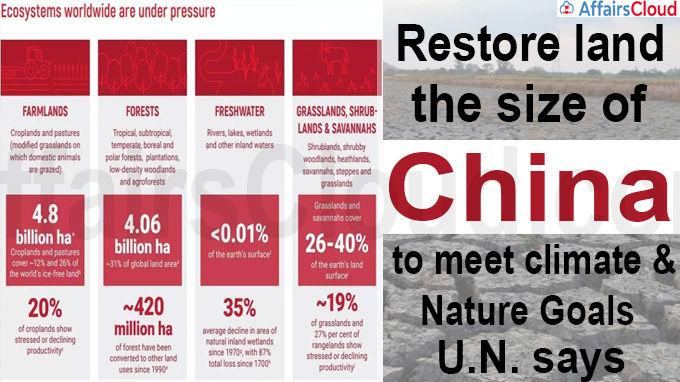
Currently, the world is using 1.6 times the amount of services that nature could provide.
Note – UN General Assembly had declared 2021–2030 as “UN Decade on Ecosystem Restoration”.
Key Findings:
Farmlands – 20% of croplands show stressed or declining productivity.
Forests – ~420 million ha of forest have been converted to other land uses since 1990.
FreshWater – 35% average decline in area of natural inland wetlands since 1970g, with 87% total loss since 1700.
Grasslands, Shrublands & Savannahs- ~19% of grasslands and 27% per cent of rangelands show stressed or declining productivity.
Mountains – 5 days per decade = average decline in duration of mountain snow cover, especially at lower elevation.
Oceans & Coasts – ~66% of ocean ecosystems are damaged, degraded or modifiedn. ~1/3 of commercial marine fish populations are fished unsustainably.
Peatlands – 65 million ha of peatlandsq, especially in Europe, Central and Southeast Asia, East Africa, southernmost America and the Amazon.
Urban Area – >50% Since 2000, the number of city inhabitants without access to safely managed drinking water has increased by more than 50 per cent.
Funds Required:
To achieve land restoration targets by 2030, investment of at least $200 billion per year by 2030 will be needed.
About Food and Agriculture Organization (FAO):
Director General – Qu Dongyu
Headquarter – Rome, Italy
About UN Environment Programme (UNEP):
Executive Director – Inger Andersen
Headquarter – Nairobi, Kenya